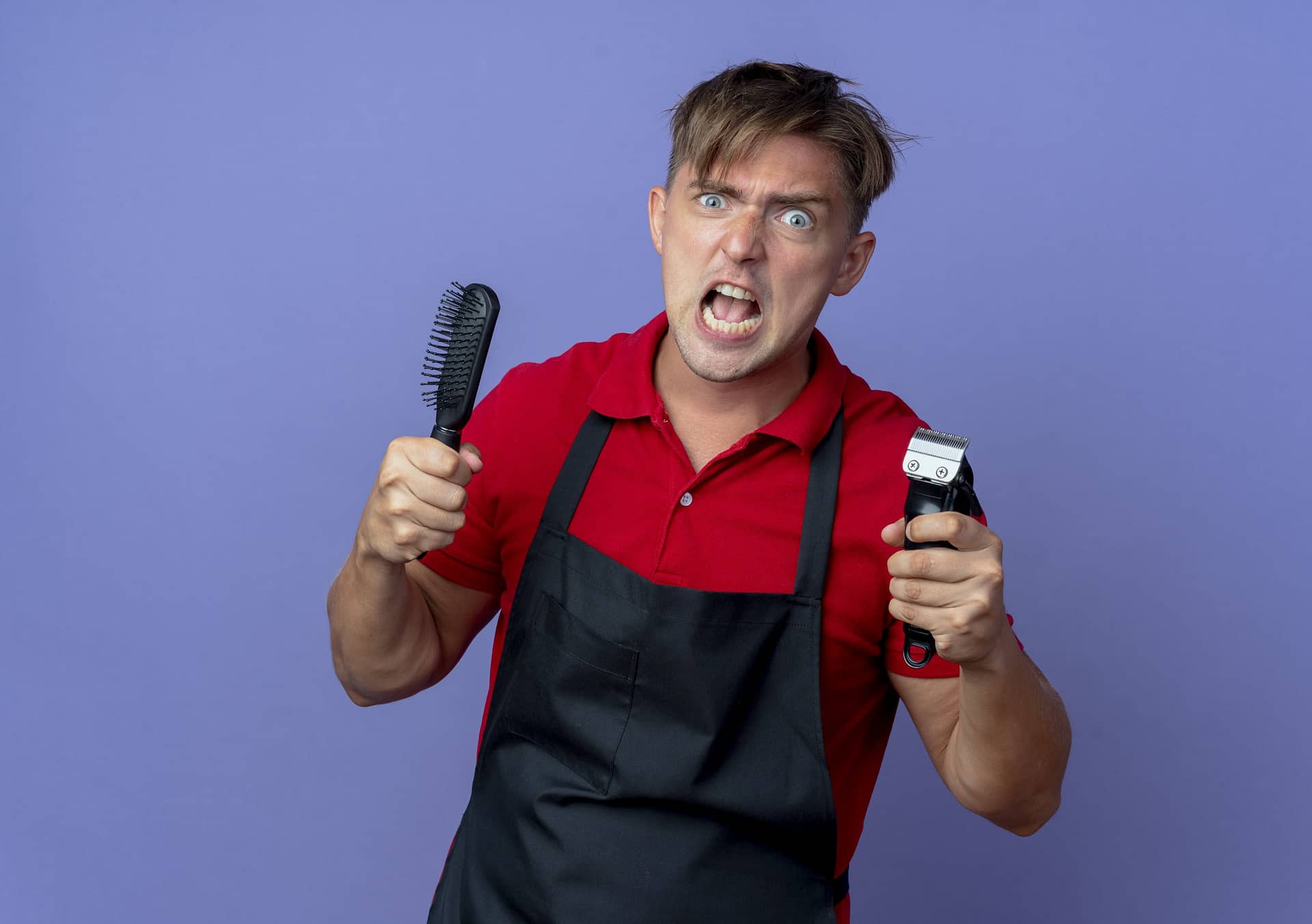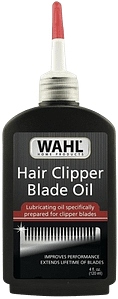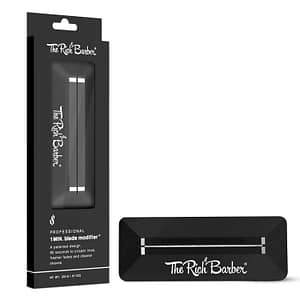Have you ever been in the middle of a haircut, and suddenly, your hair clippers stopped cutting? Annoying you, right? Knowing how to fix hair clippers that won’t cut saves your time and money.
Like any other tool, clipper issues prevent them from working correctly. You try to adjust and clean the blades, but nothing works. Don’t worry, you’re not alone. Clippers not cutting is a common problem that can happen to anyone, but luckily can also be fixed.
This article teaches you how to solve like a pro and get your clippers back to cutting like new. Whether you’re a stylist, barber, or just trying to trim your hair at home, this post will provide valuable information on fixing your clippers that won’t cut.
First, consider why my hair clippers need to be repaired, and then we will move to solutions on how to fix them.
Why My Hair Clippers Not Cutting – Reasons
Before we look at fixing the clippers that suddenly stop cutting your hair, we will identify the problems and help you with what you need to do.
Let’s read out why clippers stop to cut hair.
Dull Blades: Worn-out blades sometimes tug or snag the hair when continuously used. Over time, the edges can become blunt when not sharp, making it difficult for them to cut hair effectively.
Dirt Buildup: If you notice that the blades of hair clippers are moving but not cutting, it is due to dirt, lint or particles stuck in them. By ignoring oiling or cleaning, these accumulations on the blades can inhibit their ability to cut hair.
Faulty Motor: Frequently giving haircuts daily to the clients puts strain on the motor, damaging it or its parts. There may be a need for more maintenance. When the machine stops working, the clipper blades will not cut hair.
Improper Use: If the clippers are not used properly, they can become impaired and need repair. For example, using the clippers on the wrong hair type or for too long without allowing them to cool down can cause damage to them.
Moisture: Moisture can cause rust and corrosion on the blades and other parts of the clippers, which can impact their performance and eventually lead to fixing.
Electrical/Power Supply Issues: Some hair clippers run on electricity while others are cordless. So, any problem with the electrical components, such as the wiring, coil or motor, can cause the clippers to stop cutting correctly.
Physical Damage: If the clippers are dropped or undergo physical breakage, they may need to be repaired to continue functioning correctly. Not storing them in a proper tool case or bag will lead to wear and tear on the barber hairstyling device.
Overheating: In busy schedules, barbers perform multiple cuts every day. You will observe that hair clippers start heating, leading to not even cutting. It indicates too much pressure on a single machine. Unclean machines also increase this situation.

How to Fix Hair Clippers That Won’t Cut
Still, if you are trying to figure out the problems with hair clippers and how to fix them that are not cutting well, you can examine the solutions below.
1. Clean Your Clipper Blades
It’s important to clean without opening them after each use to stay in top condition. Regular cleaning of blades is essential to prevent hair pulling or snagging. Use a small brush or toothbrush to remove hair or dirt or apply proper cleaning techniques. If the edges are still not moving, it needs a deep cleansing action or a blade cleaning solution to soak the blades and remove any residue causing the problem.
Clipper Blade Cleaning Brush
Check Price on Amazon2. Oil the Hair Clipper Blades
Hair clippers not cutting show a lack of oiling. Blades need to be properly lubricated to move smoothly and cut effectively. Most clippers come with a small bottle of oil, which should be applied to the blades regularly.
Oiling your clippers before and after every use and during extended use is recommended to prevent overheating.
Many types of clipper oils are available, such as Andis Clipper Oil and Wahl Clipper Oil. Choose a lubricant specifically designed for hair clippers, as other oils may damage your clippers.
Regular oiling of your clippers will improve their performance and extend their lifespan. Make sure to include this step in your normal maintenance routine.
Wahl Premium Hair Clipper Blade Oil
Check Price on AmazonHere are some benefits of using oil to maintain your clippers:
- Keeps the blades sharp: Oil lubricates the blades and keeps them strong, which helps them to cut efficiently. Dull blades can cause hair pulling and uneven cuts, so keeping them sharp is essential.
- Prevents rust and corrosion: Clippers can rust and corrode without proper maintenance. Oiling helps prevent rust and corrosion.
- Increases lifespan: Regular oiling reduces wear and tear on the blades and motor, thus extending the lifespan of your clippers.
3. Sharpening Your Clipper Blades
It is also worth noting that the frequency with which you need to sharpen your hair clipper blades will depend on several factors, such as the type of hair you are cutting, the length of your cuts, and the frequency of use. Suppose you are using your clippers regularly on thick or coarse hair. In that case, you may need to sharpen the blades more frequently than someone who uses them occasionally on fine hair.
When sharpening your blades, it is important to use proper techniques and tools to avoid damaging or dulling them too quickly. For example, using a honing stone that is too rough can damage the blades, while not using enough pressure when using sandpaper can result in less effective sharpening.
Properly sharpening them every few months is compulsory to keep the blades effective and sharp. This will ensure that the clippers can cut hair effectively without causing discomfort or damage to the groomed person. Regular sharpening also helps prolong the life of the clippers.
The Rich Barber Clipper Blade Sharpener
Check Price on Amazon4. Replace the Blades
If cleaning the blades does not solve the problem, it may be time to replace them. Over time, cutting points can become dull and worn, making it difficult for them to cut effectively.
You can purchase replacement blades from the manufacturer or a professional hair supply store. Replacing the blades is a simple process, and most clippers come with instructions on how to do so.
5. Check the Blade Alignment
Blades are crucial for hair clippers; they will cut if sharp and aligned correctly. To check the placement, turn the clipper on and examine the cutter from the side. You can usually realign the edges by gently bending them back into place if the edges are uneven.
However, if the haircutters are severely damaged, you may need to sharpen them professionally. Otherwise, hair clippers will sound loud.
6. Adjust the Blade Tension
The blade tension of clippers is a crucial aspect that affects their performance. The degree of stress determines how efficiently the blades cut hair. Loose edges may result in poor cutting, while tight ones can cause discomfort and hair pulling. You can improve the quality of your haircuts and prolong the life of your clippers by adjusting the blade tension.
Use a screwdriver to tighten or loosen the blade screws to adjust blade tension. The appropriate tension level depends on the type of haircut you are giving. A closer cut requires tighter tension, while a more extended amount needs looser pressure.
Different clipper brands may have distinct methods for adjusting blade tension. For example, to adjust blade tension on Wahl clippers, turn the small screw on the side of the blade. For Andis clippers, turn the adjustment screw located on the clipper’s side.
Blade tension may also be influenced by blade sharpness, wear and tear, and lubrication. Proper maintenance and usage of clippers can help maintain optimal blade tension and performance.
Applying these guidelines and techniques can attain excellent results with your clippers by using these guidelines and procedures.
7. Examine the Motor
A weak or malfunctioning motor can cause clippers to stop cutting. Check if the motor receives stable power and if the cord is broken. Open the clipper and disassemble the blade. Turn the clipper on and listen to the motor. It may need to be replaced if it is making much noise or not turning on.
8. Repairing a Loose Hair Clipper Belt
As a hair clipper owner, you may have faced the frustrating issue of your clipper blades not moving properly. This could be due to a loose belt, easily fixed by simple steps.
- Pick the tool: Before opening up your hair clipper, ensure you have the proper tools to do so without causing any damage.
- Carefully open the hair clipper: Using your tools, gently open the clipper to reveal the battery, wires, and blades.
- Locate the screw: On the side of the clipper, you will see a screw that is used to loosen the belt.
- Check if the belt is loose. If the problem is a loose belt, tighten the screw until the belt is back in place.
- Replace the belt: If tightening the screw does not solve the problem, proceed to loosen the belt and reposition it so that it is properly placed. Then, tighten the screw until the belt feels secure and can move properly.
9. Rotating Clippers For Better Barbering
As a professional barber, you must be equipped with multiple sets of hair clippers to ensure a smooth and efficient fade-cut experience for your clients. Regular clippers’ switching between appointments helps prevent overheating and excessive wear and tear while facilitating good hygiene.
Furthermore, shifting your clippers allows you to clean all blades at once at the end of each day instead of having to clean them each time a new client arrives. This saves time and helps to maintain the longevity of your tools.
10. Storing Hair Clippers
It is important to store hair clippers in a dry location when not in cutting mode to prevent corrosion and damage to the device. It can be achieved by keeping them in a dry cabinet or a shelf in a room with low humidity.
Additionally, if the hair clipper is corded, it is recommended to disconnect the cord from the device or remove the battery from the cordless clipper to prevent it from turning on accidentally. It can prolong the life of the device and ensure it is in good working condition for future use.
Hair Clipper Storage Organizer
Check Price on AmazonFixing Brand New Hair Clippers that Won’t Cut
Different brands of clippers may have specific resolving methods. Suppose you encounter other issues with your clippers, like overheating or strange noises. In that case, it might be best to seek professional help.
Some problems may require more complex repairs, and trying to fix them yourself could worsen the situation. When in doubt, take your clippers to a professional for assessment and repair.
For instance, check the blade tension and alignment if you have Wahl clippers not cutting, which are essential for the clipper’s performance. Andis clippers may require turning an adjustment screw to align the blades correctly.
FAQs
This component tends to wear down faster than many realize and must be replaced promptly to ensure the clipper continues to work effectively. The rate at which the blade drive wears down can vary depending on the brand and model of a clipper, as well as the frequency of use. Most clipper manufacturers suggest that professional groomers replace the blade drive every 1 to 3 months, depending on their usage. To keep your clipper running smoothly, it’s crucial to stay on top of blade drive replacement and ensure this component is always in good condition.
It’s essential to maintain them properly even though they often come with self-sharpening blades. Regular cleaning and lubrication are key. If you start to experience uneven cuts or the blades pulling at the hair, it might be time to sharpen the blades to restore optimal performance.
Conclusion
Fixing hair clippers that won’t cut can be a simple process, but it’s important to properly identify the problem before attempting any repairs. By following these steps, you can save time and money by fixing the clippers instead of buying a new pair. If the problem cannot be fixed, it may be time to consider purchasing a new set of clippers.




